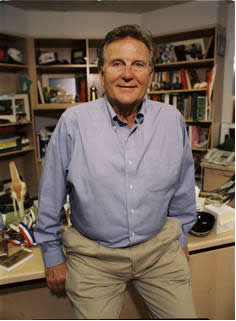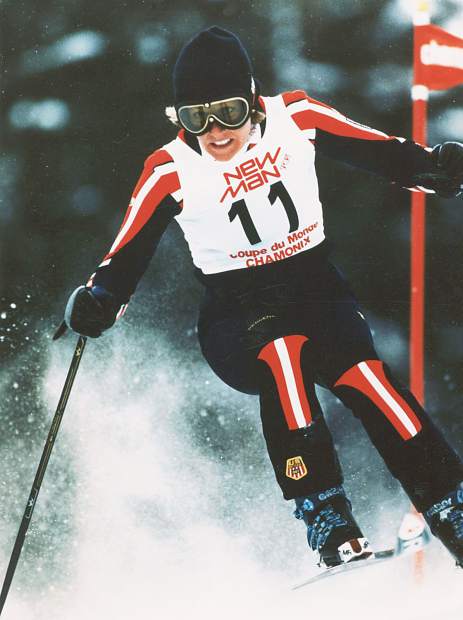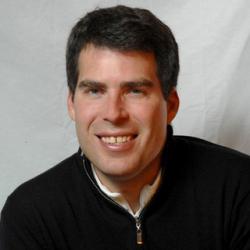Could Kaepernick see his NFL career resurrected by both Elway and Steadman Clinic?

Could Colin Kaepernick soon be a Bronco?
San Francisco 49ers quarterback Colin Kaepernick has been spending a lot of time in Vail this winter, but not because of the excellent ski conditions. The 28-year-old has reportedly been rehabbing at Vail’s Steadman Clinic after undergoing multiple surgeries to repair an injured shoulder and thumb.
On Thursday, Kaepernick reportedly tagged on a visit to Denver and the home of Denver Broncos General Manager and Executive Vice President of Football Operation John Elway, who is still hunting for more help at the quarterback position after the retirement of Peyton Manning, departure of Brock Osweiler and acquisition of Mark Sanchez.
The prospect of Kaepernick under center (or in the shotgun) for the world champion Denver Broncos is far more enticing for fans of the team than journeyman Sanchez or unproven seventh-round draft pick Trevor Siemian, although he did look good in the preseason last year.
Kaepernick is a dynamic young QB out of the University of Nevada who’s the only player in major college history to throw for more than 10,000 yards and run for more than 4,000 in his college career. He’s already thrown for more than 10,000 yards and run for nearly 2,000 as an NFL quarterback, and he led the 49ers to the Super Bowl in his breakout 2012 season. In the process, he set records for most yards rushing (181) and longest run (58) by a QB in the postseason.
Imagine installing a healthy Kaepernick behind an offensive line that’s been majorly upgraded since that sub-par unit did just enough to win it all with a largely ineffective Manning in his final season. The Broncos have added tackles Russell Okung and Donald Stephenson and will get some other starters back from injury, making that unit much more solid than what Manning, Osweiler and returning running back C.J. Anderson had to work with last season.
Kaepernick, Elway and the 49ers are reportedly very close to agreeing to all the particulars in a trade that would hopefully revive the quarterback’s career after he dropped off in recent seasons following the departure of former 49ers coach Jim Harbaugh to the University of Michigan.
Denver head coach Gary Kubiak has four Super Bowl rings as a coach, including one with the 49ers as the quarterback coach for a mobile gunslinger by the name of Steve Young. Kubiak was also Elway’s offensive coordinator when the Broncos won back-to-back Super Bowl titles in the late 90s. Elway was also a strong-armed gunslinger who could take off and run.
Kubiak’s zone-blocking schemes would likely be perfect for the mobile and born-to-bootleg Kaepernick, who would also benefit from the largely intact Denver defense that dominated en route to winning Super Bowl 50 in February. He must be weighing those possibilities as he continues to enjoy the Colorado high country while considering a pay cut to play for Elway, Kubiak and another shot at Super Bowl glory.
And moving to Colorado would also put Kaepernick in closer proximity to the world-famous orthopedic docs at the Steadman Clinic, which has revived the careers of so many injured professional athletes over the years.
Here’s a bonus read from a profiled RealVail.com did on the now retired namesake of the clinic, Dr. Richard Steadman. Steadman’s former partner, Richard Hawkins, has since moved on to this own practice in South Carolina. The story was posted with permission on RealVail.com in 2008 after originally running in Vail Beaver Creek Magazine:
Dr. Richard Steadman: an active legacy
Dr. Richard Steadman’s skills with a scalpel have earned Olympic medals, NFL sack records, Super Bowl rings and countless world championships.
But the Vail Valley’s own “surgeon of the stars” would much rather be remembered for something other than salvaging or prolonging the careers of skiers such as Phil Mahre, Picabo Street and Bode Miller and football greats such as Joe Montana, John Elway and Bruce Smith. “Steady,” as a bevy of hall-of-fame athletes call him, would rather be known as the doc who kept millions of weekend warriors out on the links or on the slopes late into life.

Dr. Richard Steadman
“I’d much prefer to be known for figuring out a procedure that helps people with arthritis, or gets people back in action that have had cartilage injuries, or an easier way to recover from an ACL surgery,” says Steadman. “I’d rather be known for that than the fact that I’ve treated some famous athletes. I’m proud to have treated them, and I’m honored that they came to me, but if I want to be known for something, I’d rather be known for these things that affect everybody, me included.”
One of the key factors that led Steadman to relocate his practice to Vail from the Lake Tahoe area in 1990 was the degree to which the community embraced his nonprofit scientific research and education efforts. The Steadman Hawkins Research Foundation (formerly known as the Steadman Hawkins Sports Medicine Foundation) has tracked more than 12,000 knee surgeries performed by the Steadman Hawkins Clinic — one of the largest orthopedic databases in the world — and has meticulously conducted research validating a slew of successful breakthrough surgical techniques.
One of them, “healing response,” got Miller back on skis and in double silver-medal-winning form at the 2002 Winter Olympics in Salt Lake City less than a year after completely tearing his ACL at a World Cup race in Austria. Healing response, an arthroscopic technique that involves making holes in the bone so a blood clot forms and reattaches the anterior cruciate ligament, is an offshoot of microfracture surgery, which Steadman also pioneered.
Microfracture, which regenerates cartilage in joints by using small incisions, was used only by about 1 percent of orthopedic surgeons worldwide in 1994. Ten years later, that statistic was up to 85 percent, and while his clinic has blazed the trail in performing the revolutionary technique, it was the foundation that painstakingly validated its effectiveness and shared it with the world.
“(Steadman) is willing to push the envelope,” says three-time overall World Cup champion Phil Mahre, whose ankle was rebuilt by Steadman less than a year before he won a silver medal at the 1980 Winter Olympics in Lake Placid. “They’re willing to try new things and do new things, and it just furthers everybody’s careers and everybody’s athletic experience, whether you’re a competitive athlete or just an average Joe who wants to be competitive on weekends.”
Mahre, who went on to win a gold medal at the 1984 Winter Olympics in Sarajevo, has benefited from Steadman’s expertise both as an elite athlete and as a backyard ballplayer. Mahre’s second Steadman surgery was a healing response 10 years after the man who is arguably America’s greatest ski racer of all time had retired. He had torn his ACL playing flag football.
Degenerative arthritis, the debilitating deterioration of joint cartilage, impacts one in three adults and more than half of everyone over the age of 65. And his office may be plastered with tributes from his three decades of operating on world-class athletes, but the soft-spoken and unassuming Steadman seems sincere when he says it’s the millions of lives touched by the acceptance and spread of microfracture surgery that bring him the most joy.
“It’s always fun to treat an elite athlete, but there’s only about a thousand of them in the world, so there’s no way you can treat all of them anyway, and there are millions of people who want to be athletic, so that’s really our foundation’s focus,” Steadman says.
“That’s where we’re really going with this foundation, to help that person, and I’m honored that high-profile people come see me, but if I’m going to be remembered for something, I’d rather it be more on the side of the things that the foundation is doing than being somebody’s doctor.”
Building a separate brand
The concept of a charitable research and education foundation was born in 1988 while Steadman was still based in Tahoe. It started as a mechanism for taking the guesswork out of his practice by studying, tracking and validating various surgical techniques. Very early on, Steadman decided none of the data the foundation uncovered should be privileged.
“We’ve taken the path that if we come up with a good idea proven at the foundation, then we provide that to physicians worldwide,” Steadman says. “So frequently we adopt a technique and it helps people around the world instead of just helping us in our practice.
“So I think that’s the thing that distinguishes us from business. If IBM comes up with an idea, they put a screen around it, whereas if we come up with an idea that’s good, and we’ve actually come up with some ideas that are good, it becomes an honor for us to have other people accept our ideas in areas that we work on.”
The foundation is one of the most highly regarded in the orthopedic community, frequently publishing influential papers and attracting top surgeons from around the world to its fellowship program. Ask people from far-flung places what they know about Vail, and the first they’ll say is it’s a great place to ski, but then, surprisingly, many will mention that famous clinic where all the athletes go to be repaired after career-threatening injuries.
Steadman and his shoulder-and-arm-specialist partner Dr. Richard “Hawk” Hawkins are perhaps victims of their own wild success when it comes to their public image. Surgical consultants for the Denver Broncos, Steadman and Hawkins have also operated on everyone from Monica Seles right after she was stabbed by a deranged fan to Kobe Bryant the day after his notorious sexual encounter with a local hotel worker who later accused him of rape.
So it should come as no surprise that the media tend to fixate on the famous and that reporters’ eyes glaze over when the topic turns to cutting-edge biomechanics research or the latest peer-reviewed article in a leading medical journal. It’s tough then for the general public to make the distinction between the famous for-profit clinic and a charity-funded foundation that relies largely on the largess of donors.
“I think some people just misunderstand the clinic and the foundation,” says Steadman. “Although they work hand in hand, the physicians don’t have any income from the foundation, none, and we actually provide a lot of the financing for the projects in the foundation. So we’re being philanthropic, but we’re also the people who are coming up with a lot of the ideas that can improve people’s athletic lifestyles.”
In addition to longstanding contributions from local benefactors such as the Vail Valley Medical Center and Vail Resorts, organizations able to make the distinction between the clinic and the foundation, the nonprofit organization receives funds from past patients who are indoctrinated in the role the foundation plays in substantiating and improving the surgical and rehabilitation techniques used by the clinic.
Then there are the special events such as the Colorado Classic, a weekend of dinners, wine tastings and golf at the Sonnenalp Golf Club each August that raises about 5 percent of the foundation’s annual operating budget.

Olympic bronze medalist Cindy Nelson
“At an event like this the money raised is going directly to the foundation; it’s not going straight into the hands of Drs. Steadman and Hawkins at the clinic,” says foundation board member and 11-time Steadman patient Cindy Nelson, the first American to win a World Cup downhill (1974) and a bronze medalist at the 1976 Winter Olympics in Innsbruck, Austria. “In fact, the doctors are some of the biggest contributors to the foundation, so it’s not like they’re trying to line their own pockets.”
Nelson was Steadman’s first elite athlete patient in 1972 and was later working as the director of skiing at Vail when Steadman was considering relocating from Tahoe. Nelson and the owner of Vail at the time, George Gillett, were instrumental in persuading the surgeon to head east. But as a foundation board member and former superstar patient, Nelson perhaps better than anyone understands the challenges of differentiating the work of the foundation from the high-profile successes of the clinic.
“Because they’ve become so famous and so expert at what they do, they’ve created their own recognition, so that’s a good thing because it has a ring of quality to it — but locally it sometimes has a negative impact because people think we’re talking clinic when we’re really talking foundation. We wrestle with it on the board all the time,” Nelson says.
“Locally, we have a need for people to understand that the foundation is not the clinic, but that the foundation actually supports the work of doctors in the Steadman Hawkins Clinic as well as the other orthopedic surgeons in the Vail Valley and nationwide.”
Despite her extensive surgical history, Nelson continues to live an incredibly active lifestyle, and she attributes it to the work of Steadman, through both the clinic and the foundation.
“Here I am, 11 surgeries later, I’m very active. I had some bad injuries and I’m really in the middle of my life and I want to continue to stay active — I don’t want these injuries to become so arthritic that I become lame or I can’t do things pain-free,” Nelson says. “I believe that the work that has been done by this foundation — will have a great enough impact on the medical profession that in my future I can be as active as I want to be for as long as I want to be, so that is great for me. I feel a sense of relief.”
But Nelson is a rarity: an athlete who gets it when it comes to the foundation. She thinks it’s critical to educate athletes on the role of the foundation so they can become de facto spokesmen for its invaluable research and education work. That tireless analysis led to microfracture surgery and its groundbreaking technique of tapping into the body’s own stem cells to regenerate cartilage, but most athletes — and the general public for that matter — don’t realize the depth of the foundation’s critical contributions.
Miller, for example, likely does not fully grasp how the foundation helped develop and validate healing response. He only knows that it helped get him back on skis in time for the Olympics.
“He got a great benefit from the foundation,” Steadman says. “Ten years from now he might be able to focus on it, but right now he’s focused on his career.”
Indeed, with age comes wisdom. Phil Mahre’s brother Steve, who finished with a silver medal right behind his sibling at the 1984 Winter Olympics, clearly understands the importance of the work going on at the foundation. Also an 11-time Steadman patient, he has had four microfracture surgeries.
“For me, what the foundation is doing is studying physical well-being, trying to focus more on prevention and that side of things and get the message out to people that this is what you have to do to prolong the joint’s health to make it work longer for you down the road,” Steve Mahre says. “Also, they’re trying to learn what is causing some of the injuries and how you can try to prevent them from happening.”
Definitely not as sexy as patching up John Elway’s shoulder in time for him to finally win two elusive Super Bowl rings late in his career. Or getting All-Pro defensive lineman Bruce Smith back on the field for another five years so he could set the all-time quarterback-sack record. But important work nonetheless, particularly if you’re a weekend duffer who can’t stand the thought of not being able to go out to try and break a hundred on the local links.
A lasting legacy
In some respects, it’s too late.
The Steadman Hawkins name will always be associated with greatness.
When you resurrect or prolong the careers of such legendary athletes as tennis greats Martina Navratilova, Billy Jean King and Lindsay Davenport, golf superstar Greg Norman, NFL hall-of-famer Dan Marino, singer/songwriter Judy Collins and countless stars of every sport from skiing to baseball to hockey, it’s bound to cement your reputation as the surgeons of the rich and famous.
Internationally, Steadman Hawkins has become synonymous with soccer, or football as it’s known outside our borders, for the clinic’s work on such global sensations as Ronaldo, Alessandro Del Piero, Oliver Kahn and Lothar Matthaus. Hardly household names in the States, but only a visit by David Beckham would garner more worldwide media attention than that quartet.
And only Vail firefighter Ryan Sutter and his wife Trista, stars of the ABC reality TV show “The Bachelorette,” could keep Steadman Hawkins docs (the clinic’s namesakes were not included) from taking top billing in the 2004 Undressed Calendar, a Vail Valley Charitable Fund production that raises money (and eyebrows) with its scantily clad photo shoots.
But for all the glitz and glam of slicing and dicing celebs, the serious side of Steadman Hawkins always finds its way to the forefront. Take, for example, a former foundation fellow stationed at the Air Force Academy in Colorado Springs, Maj. John Tokish, MD, who used his knowledge obtained at Steadman Hawkins while commanding a Mobile Forward Surgical Team in Afghanistan, treating U.S. Special Forces troops shortly after the invasion.
Soldiers, civilians, elite athletes or weekend warriors, everyone wants to stay mobile and active after injuries, Steadman says. Helping people realize that dream is what he wants as his lasting legacy.
“The more people realize that it’s not just the famous people the better,” Steadman says. “I think there’s just as much satisfaction getting somebody back who has had not a career-ending but a recreation- or athletics-ending injury.
“A high-profile athlete can find 20 doctors who will take care of him, and fortunately for me, a lot of them come here. But the standard person who just wants to stay active, they don’t have that access, so what we’re trying to do is create that access.”


Latest posts by David O. Williams (see all)
- Democratization or ruination? A deep dive on impacts of multi-resort ski passes on ski towns - February 5, 2025
- Western Rail Coalition looks to revive passenger rail service on long-dormant line connecting Colorado mountain towns - January 22, 2025
- Colorado ski town looks to dig deep, diversify energy sources as climate change threat looms - January 10, 2025

You must be logged in to post a comment Login